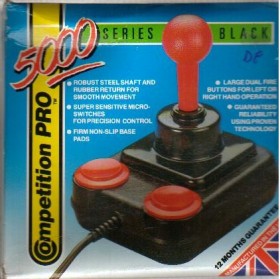I believe it is important to document important knowledge for future generations. With that in mind, a tale from my distant past…
It was 1982 or 1983, and I was at Jason L’s house doing what kids of that age (10) do. Riding bikes, eating lollies, talking about Star Wars. And – of course – playing Atari 2600.
We were in Jason’s downstairs room. The one where his dad stored the pickled tumors and testicles (I think he was a urologist). There was a large cream-coloured sofa and an ancient console-style TV on which the 2600 was connected. There were quite a few people there – a dozen or more. It was probably a birthday party for Jason. Many were there to hear the lie.
John F lived nearby. He was there with his brothers. I remember them as twins, although I doubt that is true. They were both younger, and probably only invited because they were virtually neighbours. Both were energetic and talkative boys, especially compared to John. They are key players in the tale, since one of them (I forget which one) would be the person that would that day utter the greatest lie ever told.
I wonder what we had for lunch? Hamburgers maybe? Hotdogs? Jason had a pet crow in a giant aviary-cage in the backyard. Or was it a magpie? I went into the cage one time and fed it. I was no doubt scared, for corvids scared me at that age.
Many years later (at university) I would befriend Jason’s sister Alison, who was a few years older than me. She was a sweet girl, who once had trouble at school because she was reluctant to euthanize the rabbits and rats used in her lab. I assume she was there that day to hear the lie.
We were all playing Pac-Man on the 2600. It was dark. Was it winter? Was it a pyjama party? I doubt the latter; probably just a party that went into the evening. There were quite a few of us in that room all playing Atari at the time, probably unaware of how legendary the game would become one day.
At that age children exaggerate. It is common for younger boys to attempt to impress older boys with outrageous statements. Lies if you will. On that day one of John F’s younger brothers revealed a dark and spooky secret, otherwise known as the greatest lie ever told:
“One night I was playing Pac-Man and the game stopped and a skeleton hand dragged across the screen and the words ‘don’t kill my babies’ appeared.”
I imagine it looked something like this:
As I said, many heard this claim. He was quizzed on it, and stuck to his story. Laughter ensued, and in the days that followed amusement would turn to mockery as word spread at school. Somehow John himself became the victim of some of the teasing, as if he was responsible for his brothers ludicrous comment. I recall dimly the teasing became so bad a teacher was involved at some point (or so I heard).
I think it is safe to say that few – if any – of us believed that such an incident had occured.
Looking back almost 30 years later I am torn. The scientist in me requires hard evidence to believe anything, but the imaginist in me likes to be proven wrong on such matters. In time, the boy that made the claim grew into a man and (sadly) passed away some years ago, so the veracity of his tale is beyond further investigation. Did he even remember it? Does anyone else? Why do I?
More importantly: could this really have occurred?
Suffice to say, even if he was telling the truth, the title of this post would remain accurate…




